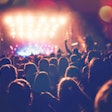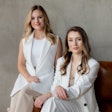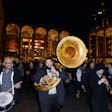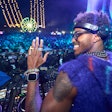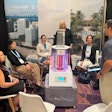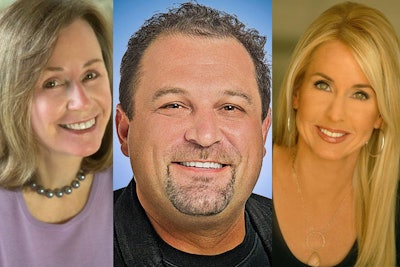
Planners often seek feedback on their events from attendees and sponsors, but what about the speakers? With exposure to a variety of formats and audiences every month, these men and women can provide a unique and valuable perspective. We reached out to four very busy speakers who give keynote addresses, moderate panels, and lead breakout sessions at multiple events every month. Here are their tips for planners.
Bryan Kramer, C.E.O., PureMatter, author and speaker
When you go to a large conference I still think there’s a way to make it so you’re not just a number. That’s how I feel at some of the very largest conferences. It’s the way they communicate with you ahead of time, the way they give you a way to find the right people that you need to be in with. A majority of people don’t know how to network or they aren’t comfortable doing it. The more an event can help them to connect they will be more successful.
One of the biggest things is to treat every speaker equally. Sometimes I am a headliner, sometimes I’m not, and I can see the difference between the two. I wish they would give every speaker that same level of attention to detail—the warm introductions, the communication coming from an individual rather than a mass blast—to humanize the experience.
I just had my best experience as a speaker in Italy, and it was because they had activities for all of the speakers together. We all bonded. So by the time we got on stage we were friends. And I noticed something—because we were friends we were quoting each other, because we knew each other. You don’t quote people you don’t know. As a speaker, if they socialize you before, it makes a world of difference on stage with the energy that comes out.
I rarely get into a room where they are ready for me. When I walk into any room, unless it’s a keynote on a main stage, it’s usually a mad scramble from the last speaker to the next. So if there’s some way to profile each speaker ahead of time, maybe you check-off a list—what kind of mic you want, how you move around—and then they prep the room for you before you get there. That would be pretty good. A lot of times they’ll collect my PowerPoint ahead of time, which is good, but it stops there. And I’m saying take it a step further.
Tamara McCleary, relationship and organizational culture specialist and speaker
Communication is huge. I think the best events are where I can co-create with the meeting planner because they communicate to me and let me know what they want, what the attendees are wanting, who’s in the audience, what their desires are. It helps me to tailor what I’m going to deliver.
Starting on time and breaking on time: It affects the energy of the entire event. When things are organized the energy is high and it’s almost celebratory. When things are chaotic, and out of control, and behind schedule, it takes the energy down. Our audiences pick up on what’s going on in the background. Some events I attend there just isn’t enough staff or support team to coordinate all of the events and all of the attendees. And it can destroy the room. You’ll have a participant that wants to stop you when you are on stage to let you know that there’s no more cream for the coffee.
With all the events I do one area I see underutilized by meeting planners is promotion. Prior to the event if I’m given the tools I can blast that all out on my social media channels. There’s a really savvy meeting planner that I worked with who had me do some 30-second to one-minute video clips to get people jazzed. I am more than happy to help with that internal and external promotion if they’ll ask me. For me as the speaker it already engages my audience with me before I get there.
Whenever I have a room shaped in a chevron or a herringbone pattern, the audience is really engaged. If a room can’t support that setup, my next favorite would be classroom. My least favorite is that banquet setup with round tables. You have a lot of distractions. It’s hard to sit at a circular table when your neighbor is fiddling with their phone.
When I’m a keynote, that means you are offering all of these succulent little pieces of wisdom to get people thinking, but you don’t have time to get into the nitty gritty details of "how to." And people later are hungry for that information, so what’s nice is to offer your participants a webinar for follow-up for anyone who might need a little extra. I’m always willing to offer more. That’s always a nice takeaway for your participants to offer something extra, a little above and beyond. It’s a way to re-engage your audience and to solidify what you’ve offered in a keynote.
Brian Fanzo, partner, Broadsuite Media Group, change evangelist and speaker
Sometimes there’s a disconnection from what the average attendee wants and what I believe the events do. It can feel like they cater toward the sponsor needs instead of those sitting in the seats. Many events I present at and attend have so many tracks and so many things at the same time and don’t even factor in the same topics or logistics of how to get between events. That frustrates me as a speaker and as an attendee.
I’m amazed that the events are spending a considerable amount of money on some of these technologies like better Wi-Fi and a better mobile app, yet they are not using the app in a way that actually benefits them. If you can connect the app with your online community, the data that’s available there would not only give you a cross-section of who the people are that attended and what they are sharing but also allow you to know who they engage with online and which people were paying attention to the hashtag. Then you can build the persona of your next event based on that data. That’s a powerful piece that’s not being used.
At a recent event, none of the event organizers were using the app and yet they were telling everyone to use it. As a speaker I was sending them direct messages through the app and they were telling me, "No just text message me because none of us are using it."
I’ve been using a lot of these live-streaming apps. I think it’s a good thing. I feel like the events that have value and are well designed and that are focused on the attendee, they are not going to be scared of these live-streaming technologies because it will expose the greatness of their event beyond what a shaky camera can hold. I was at South by Southwest and over the eight days I did 42 Meerkat sessions. Not one person who watched said, "I’m never going to go [to SXSW]." The majority said, "You gave me insights I never knew, so I’ve already blocked it off my calendar next year." It’s about understanding the technology and giving people parameters. I’ve worked with two events where they didn’t tell you couldn’t live stream, they just asked that you didn’t use the Wi-Fi and that you didn’t broadcast the entire keynote.
Kare Anderson, co-founder, Say It Better, speaker and columnist
The most neglected and the most important moment is the last experience. At a conference as people go out the door, people are on their own again. No one’s making them feel good. But [what] if there’s a big message on the wall that says, "We love that you came," or something more emotional? Or suppose they got a short e-booklet via email as they went out the door and it was the highlights of the event, tips from speakers and also from attendees, what they most liked. At a small conference maybe people line up and actually shake hands and say, "Thanks for coming."
Also think about that first experience. When you walk in, you are often standing in line, but if you had a mobile in the ceiling—we look up and we smile when we look up. It literally lifts our moods. So think about that opening scene. Make it interesting. Make it feel like something fun is happening. The younger the people the higher the expectation that something interesting should happen right when I get in. Anything that lets us move together, laugh, and engage sets us up to think we’re going to have a good time. Yet we don’t do it.
I really believe in mutuality. It’s about making something ... better together than what we would have had as our experience on our own. The core benefit ostensibly of a conference is face-to-face conviviality and learning. So give us a reason to talk about something other than how are you, how’ve you been, how’s the weather.
I am an introvert like a lot of speakers. And I just see events are oriented toward more outgoing people. I think if there was a way that there were ambassadors at an event and maybe they say, "Is this your first time, can I introduce you to some people I know?"
There’s a way to warm it up a bit. There’s not an effort to help people bond as they move through the halls or sit in a session. So they sit next to someone they already know. We need to enable people of different personality types to identify people with sweet spots of shared interests.









